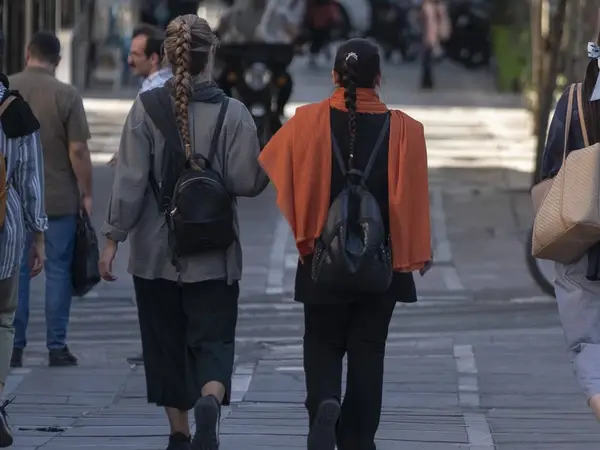Recent statements from top clerics and Supreme Leader Ali Khamenei reflect their rising concerns about the weakening of their ideological control due to growing defiance against hijab.
Khamenei and other clerics, who previously dismissed women opposing mandatory hijab as a small minority influenced by "the enemy," are now framing unveiling as a "challenge" and advocating for stricter enforcement of hijab laws.
During a recent address to government officials, Khamenei claimed to have received "reliable reports" of women being paid to unveil, allegedly by "the enemy," to undermine the hijab. He labeled hijab defiance as "an imposed challenge," suggesting it was orchestrated to weaken societal adherence to hijab.
Furthermore, Khamenei stated that "the enemies" aim to revert women's status to pre-Islamic Revolution times when their behavior, attitude, and presence in society were deemed unacceptable.
In his Eid al-Fitr sermon a week later, Khamenei also addressed defiance against Ramadan restrictions for the first time, signaling a broader concern over challenges to Islamic norms and values.
“This year I received some reports about deliberate disregard of fasting in some public places. The Islamic Republic certainly does not seek to force people to piety, but it has a responsibility regarding religious norms being broken. Authorities and people should not neglect this and those who do amr-e be marouf va nahy az monkar should carry out their duty,” he said.
Amr-e be marouf va nahy az monkar means calling others to enjoin what is good, such as hijab and fasting, and forbid them from doing what is wrong or sinful. Vigilantes often confront others, sometimes even violently, for hijab and fasting by arguing that they are only carrying out their religious duty.
Defiance of hijab, once only noticeable in larger cities such as Tehran, has now spread even to smaller and more conservative cities and towns including the religious city of Qom, the home of the majority of the country’s seminaries.
Defiance of hijab has become a symbol of defying the Islamic government in the perceptions of Iranians. This is perhaps the main reason for the discomfort clerics feel about the phenomenon.
In his Monday lecture to seminarians, the conservative Ayatollah Mohammad-Javad Fazel-Lankarani criticized the “cultural authorities” for “not doing anything in the past forty years [about hijab]” while alluding to the spread of unveiling to Qom. He, too, accused “the enemy” of seeking to restore the circumstances in the society to before the Islamic Revolution when hijab was a personal choice.
“Can’t we even reform the city of Qom? One regrets getting out of the house because of the things one sees,” he asked, referring to women’s manifest defiance of compulsory hijab.
Until a couple of decades ago, even women who covered their hair and wore loose, long tunics were in minority in the very conservative city of Qom where the long black veil called chador was the dominant form of hijab. Many women now only very partially cover their hair, wear heavy makeup and tight-fitting clothes, or even drop their headscarves on their shoulders to much chagrin of clerics and political hardliners of the conservative city.
Qom is Iran's second most important holy city after Mashhad, the country’s second-largest city and home to the shrine of the eight Shia Imam, where the spread of unveiling of women has been even more noticeable.
In his Eid al-Fitr sermon Wednesday, Mashhad’s ultra-hardliner imam, Ahmad Alamolhoda, also referred to the “current challenge over hijab” which he called “a puppet movement” that seeks to destroy Islam.
“The women who unveil and those who do not fully comply with the rules “should be aware that they are collaborating with the enemy who has not only targeted Islam but also the pure land of this country,” he said.
